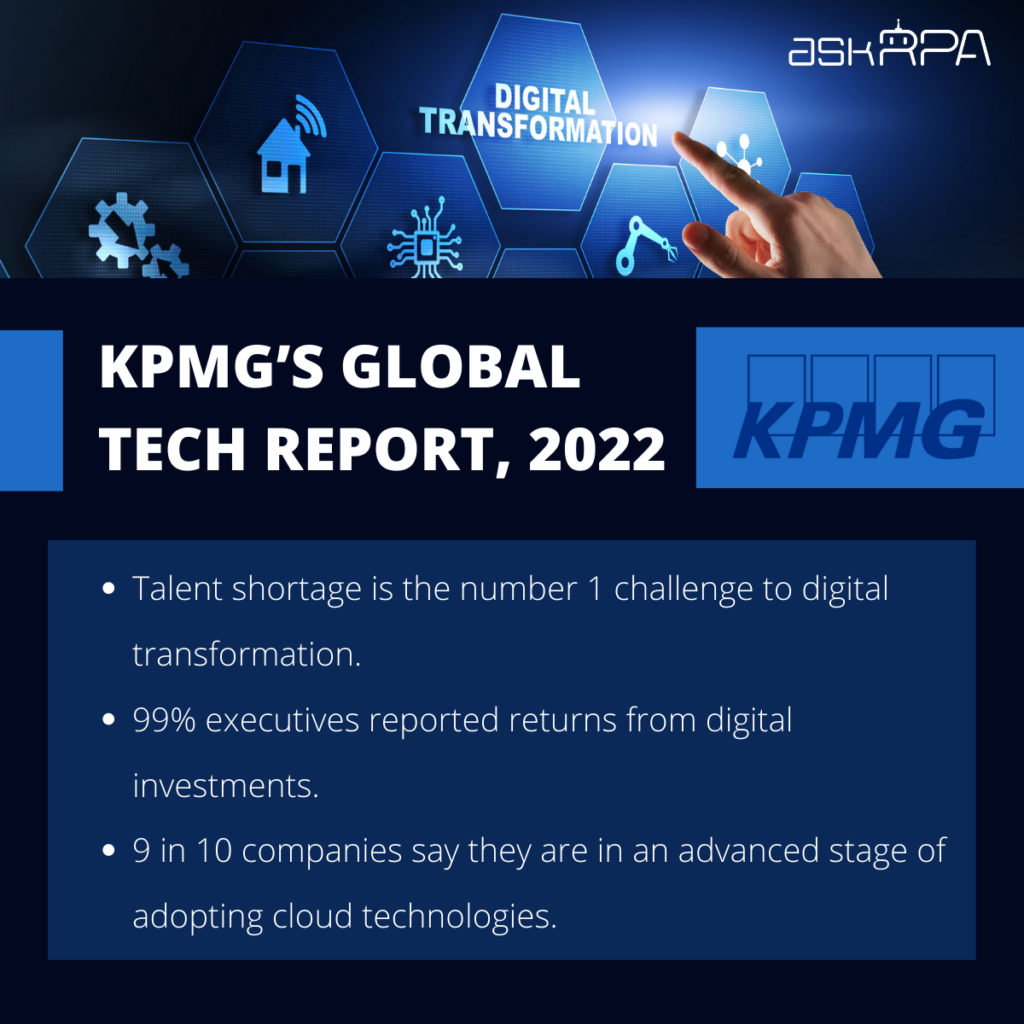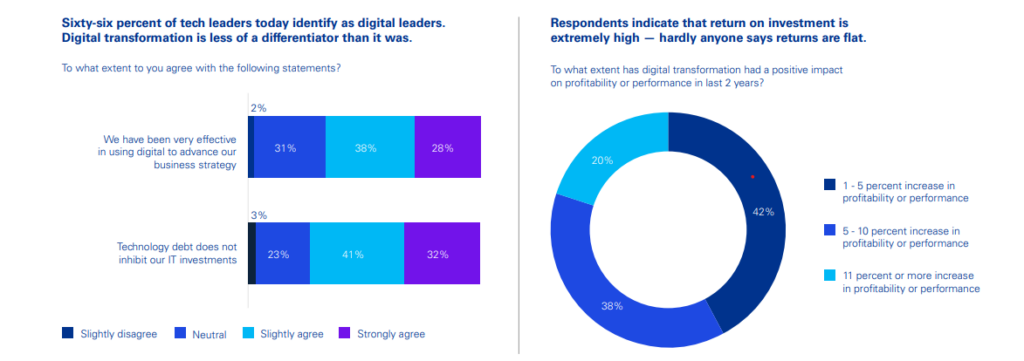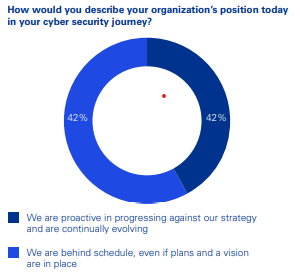According to the report, businesses are embracing new technology and are prepared to fund new tools. Nearly all respondents claim that digital changes in their firms have increased performance and profitability during the past two years. According to the study, they also seem to accomplish significant implementation milestones earlier than anticipated.
The survey indicates a general desire for new technologies, even if they are unproven and might be disruptive. Within the next two years, 67 per cent anticipate adopting new platforms, including Web3, the metaverse, and non-fungible tokens (NFTs). Within the same period, 73% made investments in quantum computing. Advanced

1. Tech enthusiasm for consumer interaction is strong
Customer value serves as the primary motivation for IT work
Customer-centric experiences entail creating procedures, services, and products that best satisfy consumers’ demands. Since 96% of customers believe that customer service quality directly affects whether they would buy from a business again, this strategy also offers commercial advantages.
How many new technologies, like non-fungible tokens (NFTs), affect how customers are engaged? Head of Digital Products at the Natural History Museum in the UK, Sedef Gavaz, explains. New technologies could enable users to make money off of their data.
A better client experience is provided through enterprise technology
The engagement process becomes more complex and takes longer when front, middle, and back-office tasks are not coordinated. This fragmentation may hinder operational efficiency and ruin otherwise great client journeys. Enterprise technology re-engineering enables businesses to enhance the customer experience.
Gaining clients’ confidence requires reliable experiences
Integrating cyber security requires integrating cyber security to build dependable and trustworthy consumer experiences for digital transformation efforts. This is among the most potent drivers of increased investment in cyber security. Businesses emphasize cyber security as a growth catalyst rather than merely a compliance burden.
A better client experience is provided through enterprise technology
The engagement process becomes more complex and takes longer when front, middle, and back-office tasks are not coordinated. This fragmentation may hinder operational efficiency and ruin otherwise great client journeys. Enterprise technology re-engineering enables businesses to enhance the customer experience.

Source 1- KPMG global tech report, 2022
Gaining clients’ confidence requires reliable experiences
Integrating cyber security requires integrating cyber security to build dependable and trustworthy consumer experiences for digital transformation efforts. This is among the most potent drivers of increased investment in cyber security. Businesses emphasize cyber security as a growth catalyst rather than merely a compliance burden.
2. While Digital momentum is increasing, Risks still exist
According to the survey, most IT executives are optimistic about digital transformation results. According to a recent Association of Chief Information Officers (ACI) and Deloitte study, 66 percent of respondents think their companies successfully leverage technology to promote their business strategy.
This year’s research series has the highest confidence level, indicating that effective digital transformation is less of a differentiator. Most organizations have barely increased by 1 to 5 percent in the previous two years, but almost all have adopted digital transformation to increase their profitability or performance.
Approximately 150 organizations (7 percent of all responders) in the survey had very productive transformation initiatives. According to a study by Deloitte, these digitally sophisticated firms are 5% more likely to adopt a proactive approach when implementing digital-transformation plans.

Source 2- KPMG global tech report, 2022
Organizations are creating their roadmaps for upcoming technology
Most surveyed are preparing strategies for future investments in and adopting new technology. The financial sector will be most interested in investing in the metaverse the following year. The markets for energy and chemicals showed the slightest interest in funding this idea throughout that period. Before investing, most respondents are waiting for their clients to want goods and services based on these technologies.
According to more than 75% of participants in a recent McKinsey & Company poll, “technology debt” has little impact on their IT goals. They claim that poorly managed tech debt might cause integration problems and decrease productivity. Plans for developing technologies shouldn’t ignore the significance of lowering tech-debt duties to prevent fragmentation that can affect consumer interactions.
Adopting the cloud is no more a sign of a digital leader but rather the natural progression of IT
88% of respondents claim to have a more advanced level of cloud use. Fifty-five percent of companies have migrated very well or exceptionally successfully from old programs to SaaS alternatives. The main benefits that businesses are getting from cloud computing include efficiency improvements and a 35% reduction in the total cost of ownership.

Source 3- KPMG global tech report, 2022
Plans for transformation and optimization are likely to be slowed down by talent and cultural issues
Businesses increasingly need software engineers, data scientists, and other talented technologies. According to a poll conducted by KPMG for US-based company’s consultancy companies, this is particularly true in the healthcare sector (52%) and manufacturing (48%).

Source 4- KPMG global tech report, 2022
Organizations that are reluctant to change seem to threaten digital innovation. One of the top five obstacles to digital transformation is risk-averse cultures. According to a recent analysis by Forrester Research, organizations in the consumer retail and health sciences sectors are more likely to experience cultural reluctance.
Budget insufficiency is a problem
One of the main problems that firms confront is the high cost of digital transformation. According to a recent McKinsey & Company (MRC) and Bain Capital Institutional Investor analysis, the lack of executive support or investment clearance impedes development technology.
3. Teams working on cyber security have trouble keeping up
Fifty-eight percent of businesses acknowledge that their approach to cyber security is behind schedule. The most significant risk and return sectors should be given priority in cyber investment plans. According to experts, this evidence-based structure may ensure that cyber initiatives advance as quickly as feasible.
The digitalization of consumer channels brings about cyber risks that put confidence in jeopardy
Customers may be in danger due to weaknesses in digital and disruptive technologies, according to KPMG’s 2022 cyber study. According to the survey, worries about data privacy are the main factor diminishing stakeholder trust in organizations. Tech advancements should be planned for early on rather than being introduced later as an afterthought.

Source 5- KPMG global tech report, 2022
The capability to handle the terrain ahead
According to the survey, more than 50% of participants felt very or extremely confident in their capacity to counteract cyber threats, including those posed by organized criminal networks and insider threats. Security threats arise from digital consumer engagement points, yet the digitization of communication channels necessitates more significant risk mitigation.
4. Seven characteristics of firms that are digitally advanced today
Over the previous two years, almost all organizations have improved their profitability or other performance measures through digital transformation. This survey demonstrates that digital modifications’ success is quickly becoming a must for organizations to flourish, with confidence levels about digital effectiveness at a record high.
The technologically mature businesses of today –
Eliminate silos so that each department may hear the employee’s voice
To enable initiatives to include employee feedback from essential stakeholder groups consistently, digital leaders are knocking down silos. Employees in business and IT may clear up misunderstandings through cross-departmental collaboration and education. This positive dynamic improves team productivity and helps spot possibilities to make customers’ experiences more convenient.
Are a component of the skill shortage’s solution
Businesses are revising how they recruit and develop specialized talent from the ecosystem. Organizations should be encouraged to broaden their viewpoints and increase their talent pool via long-term plans. College and university outreach initiatives may inform and motivate those applying for entry-level jobs.
Establish strict coordination among cloud stakeholders
By enhancing their methods of operation, technology leaders are maximizing the effectiveness and financial advantages of the cloud. Misaligned stakeholder interests are a significant barrier to business cloud migration. This is a more incredible difficulty, according to CISOs, than security and compliance regulations.
Make sure cyber experts are involved from the start in tech selection and personnel training
KPMG research suggests that businesses increasingly see cyber security as a golden thread running through growth and success. Technology leaders are capitalizing on cloud efficiency and cost benefits by optimizing their work processes. Stakeholder misalignment is a significant factor holding back cloud migration for most businesses.
Stakeholder misalignment on outcomes is a more significant cloud challenge than security and compliance requirements. CISOs say the internet of things (IoT) will likely receive investment attention over the next year, but it can present a significant cyber security risk. To show digital maturity, organizations should ensure CISOs and cyber teams engage in early-stage discussions about how and where technology will be used.
Allow customer feedback to direct emerging-technology plans
Cross-functional workshops can offer practical information that puts the use of particular technologies to the test. Businesses with a robust digital presence focus their investments in developing technologies on features that will benefit customers the most. This strategy may help a company retain more clients in challenging economic times.
Are willing to change platform providers to improve the experiences of customers
Within corporate digital ecosystems, there is a need to identify a single platform or, at the very least, a streamlined stack of business technologies. The elimination of technical debt would be just one advantage. But the way capabilities develop will always make it challenging to consolidate tech stacks.
Are not scared to do informed experiments
Everson: Achieve goals as you go toward your ultimate goal. This enables you to change course as you go along and bank victories. According to Everson, it’s critical to understand that some paths can ultimately be fruitless. You can obtain favourable outcomes if you habitually divide your ultimate end goals into manageable targets.































